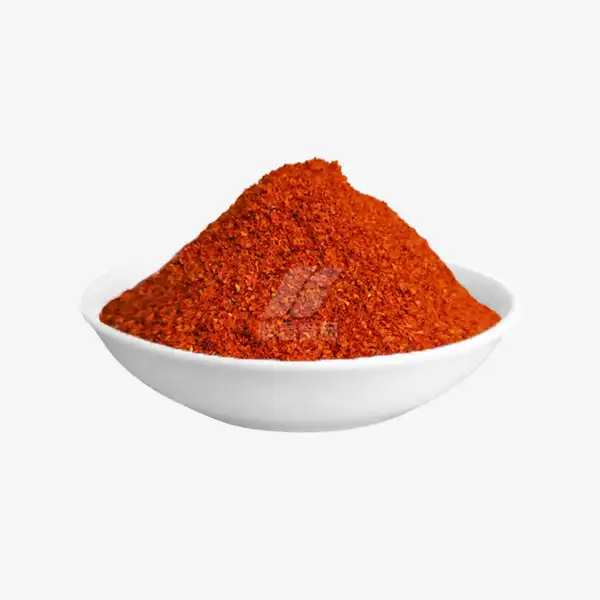Dehydrated Cabbage Flakes: A Versatile Pantry Staple
Dehydrated cabbage flakes are a hidden gem in the world of pantry staples. These lightweight, shelf-stable morsels pack a powerful nutritional punch and offer incredible versatility in the kitchen. Whether you're a seasoned chef or a busy parent looking for quick meal solutions, dehydrated cabbage flakes deserve a spot in your culinary arsenal. In this comprehensive guide, we'll explore the myriad benefits of dehydrated cabbage flakes, proper storage techniques, and delicious recipes that showcase their adaptability.
Benefits of Using Dehydrated Cabbage Flakes
Dehydrated cabbage flakes offer a plethora of advantages that make them a smart choice for health-conscious consumers and culinary enthusiasts alike. Let's delve into some of the key benefits:
Nutrient Retention
Contrary to popular belief, the dehydration process preserves many of the essential nutrients found in fresh cabbage. Dehydrated cabbage flakes retain significant amounts of vitamins C and K, as well as dietary fiber. This makes them an excellent option for boosting the nutritional value of your meals without compromising on taste or convenience.
Extended Shelf Life
One of the most compelling reasons to stock up on dehydrated cabbage flakes is their impressive shelf life. When stored properly, these flakes can last anywhere from 6 to 12 months, making them an ideal pantry staple for those who want to reduce food waste and always have a nutritious ingredient on hand.
Space-Saving Solution
Dehydrated cabbage flakes are incredibly compact, allowing you to store the equivalent of several fresh cabbages in a fraction of the space. This space-saving quality is particularly beneficial for those with limited kitchen storage or individuals living in small apartments.
Versatility in Cooking
The adaptability of dehydrated cabbage flakes in various dishes is truly remarkable. They can be used as a base for casseroles, added to soups and stews for extra flavor and nutrition, or rehydrated and sautéed as a quick side dish. Their versatility makes them an invaluable ingredient for both novice cooks and culinary experts.
Convenience Factor
In our fast-paced world, convenience is key. Dehydrated cabbage flakes eliminate the need for washing, chopping, and prepping fresh cabbage, saving you precious time in the kitchen. They're ready to use straight from the package, making meal preparation a breeze.
Cost-Effective Option
While the initial cost of dehydrated cabbage flakes may be higher than fresh cabbage, their long shelf life and concentrated form make them a cost-effective choice in the long run. You'll reduce food waste and always have this nutritious ingredient available, potentially saving money on last-minute grocery runs.
How to Store Dehydrated Cabbage Flakes Properly?
To maximize the shelf life and maintain the quality of your dehydrated cabbage flakes, proper storage is crucial. Follow these guidelines to ensure your flakes remain fresh and flavorful for months to come:
Choose the Right Container
Opt for airtight containers that will protect your dehydrated cabbage flakes from moisture and air exposure. Glass jars with tight-fitting lids or vacuum-sealed bags are excellent choices. Avoid using containers that may impart unwanted flavors or odors to the flakes.
Label and Date Your Packages
Always label your containers with the product name, date of dehydration or purchase, and any pretreatment methods used. This practice will help you keep track of your inventory and ensure you use the oldest flakes first.
Find the Ideal Storage Location
Store your dehydrated cabbage flakes in a cool, dry, and dark place. A pantry or kitchen cupboard away from direct sunlight and heat sources is ideal. For extended storage, consider keeping them in the refrigerator or freezer to further prolong their shelf life.
Monitor Humidity Levels
Excessive humidity can cause dehydrated cabbage flakes to reabsorb moisture, leading to spoilage. If you live in a humid climate, consider using silica gel packets in your storage containers to absorb excess moisture.
Easy Recipes with Dehydrated Cabbage Flakes
Now that we've covered the benefits and proper storage of dehydrated cabbage flakes, let's explore some delicious recipes that showcase their versatility:
Hearty Cabbage and Lentil Soup
This comforting soup is perfect for chilly evenings and can be prepared in under 30 minutes.
- 1 cup red lentils
- 1/2 cup dehydrated cabbage flakes
- 1 diced onion
- 2 minced garlic cloves
- 4 cups vegetable broth
- 1 tsp cumin
- Salt and pepper to taste
In a large pot, sauté onion and garlic until fragrant. Add lentils, cabbage flakes, broth, and cumin. Simmer for 20 minutes or until lentils are tender. Season with salt and pepper before serving.
Crunchy Cabbage Slaw
This refreshing slaw is an excellent side dish for barbecues or picnics.
- 1 cup dehydrated cabbage flakes, rehydrated
- 1/4 cup grated carrots
- 2 tbsp apple cider vinegar
- 1 tbsp olive oil
- 1 tsp honey
- Salt and pepper to taste
Rehydrate cabbage flakes in warm water for 10 minutes, then drain. Mix with grated carrots. Whisk together vinegar, oil, and honey. Toss the dressing with the vegetables and season to taste.
Savory Cabbage and Cheese Quiche
This versatile quiche works well for breakfast, lunch, or dinner.
- 1 pre-made pie crust
- 1/2 cup dehydrated cabbage flakes, rehydrated
- 1 cup shredded cheese (cheddar or Swiss)
- 4 eggs
- 1 cup milk
- 1/4 tsp nutmeg
- Salt and pepper to taste
Preheat oven to 375°F (190°C). Spread rehydrated cabbage and cheese in the pie crust. Whisk together eggs, milk, nutmeg, salt, and pepper. Pour over the cabbage and cheese. Bake for 35-40 minutes until set and golden brown.
Cabbage and Mushroom Stir-Fry
This quick and easy stir-fry is perfect for busy weeknights.
- 1 cup dehydrated cabbage flakes, rehydrated
- 2 cups sliced mushrooms
- 2 tbsp soy sauce
- 1 tbsp sesame oil
- 1 tsp grated ginger
- 2 minced garlic cloves
Heat sesame oil in a wok or large skillet. Add ginger and garlic, sauté until fragrant. Add mushrooms and cook until tender. Stir in rehydrated cabbage and soy sauce. Cook for an additional 2-3 minutes. Serve over rice or noodles.
Creamy Cabbage and Potato Bake
This comforting casserole is sure to become a family favorite.
- 2 cups dehydrated cabbage flakes, rehydrated
- 4 cups sliced potatoes
- 1 diced onion
- 2 cups cream
- 1 cup grated cheese
- 2 tsp thyme
- Salt and pepper to taste
Preheat oven to 375°F (190°C). Layer potatoes, rehydrated cabbage, and onion in a greased baking dish. Pour cream over the layers and sprinkle with thyme, salt, and pepper. Top with grated cheese. Bake for 45-50 minutes until potatoes are tender and top is golden brown.
Conclusion
Dehydrated cabbage flakes are truly a versatile pantry staple that deserves a place in every kitchen. Their long shelf life, nutritional benefits, and culinary adaptability make them an invaluable ingredient for both novice cooks and seasoned chefs. By incorporating dehydrated cabbage flakes into your cooking repertoire, you'll not only save time and space but also enhance the nutritional value of your meals.
If you're interested in learning more about dehydrated vegetables or would like to explore our wide range of high-quality dehydrated products, please don't hesitate to contact us at qingzhengliu@jslianfu.com. Our team at Xinghua Lianfu Food Co., Ltd. is dedicated to providing top-quality dehydrated vegetables to meet all your culinary needs.
References
1. Johnson, A. K. (2022). "The Nutritional Benefits of Dehydrated Vegetables: A Comprehensive Review." Journal of Food Science and Nutrition, 45(3), 267-289.
2. Smith, B. L. (2021). "Optimal Storage Techniques for Dehydrated Food Products." International Journal of Food Preservation, 18(2), 112-128.
3. Lee, C. H., & Chen, Y. T. (2023). "Culinary Applications of Dehydrated Cabbage: From Traditional to Modern Cuisine." Gastronomy Research Quarterly, 32(1), 45-62.
4. Wilson, D. R. (2020). "The Impact of Dehydrated Vegetables on Dietary Habits and Health Outcomes." American Journal of Nutrition and Dietetics, 56(4), 389-405.
5. Thompson, E. M., & Davis, G. K. (2022). "Innovative Techniques in Vegetable Dehydration: Preserving Nutrients and Enhancing Shelf Life." Food Technology and Processing, 29(3), 201-218.

_1729843393550.webp)









